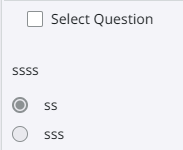3rd Annual CertOber - CompTIA Tech+ Training
- By scford
- CompTIA IT Fundamentals
- 1 Replies
For anyone who lives in Houston or the surrounding areas, I will be hosting our 3rd annual CertOber event at the James D. Eggers Instructional Support Center (ISC Building) in Humble ISD. This event is offered at NO COST to students and community members, but space is minimal, so you must go through Eventbrite to reserve your seat.
Here are the detials
I’m excited to announce the 3rd Annual CertOber Event, hosted at the James D. Eggers Instructional Support Center (ISC Building).
This five-day, hands-on certification bootcamp is designed to prepare students for the new CompTIA Tech+ certification—a powerful first step into the world of technology, cybersecurity, and digital literacy.
I wanted to ensure your parents and kids are aware of this opportunity, which is open to all students in our community, including parents. There is no cost for the tickets, and they are going fast.
 Why This Matters
Why This Matters
 What’s Included
What’s Included
 Event Details
Event Details
 Cost
Cost
 Reserve Your Seat
Reserve Your Seat
Seats are limited and go fast! (I announced this event on Friday, and we are close to 50% sold out!)
Last year’s CertOber drew over 80 participants and filled quickly — don’t miss out.
[Click here to reserve your spot]
(This training typically costs over $2,500 at private training centers — we’re offering it at no cost to the community.)
 About the Instructor
About the Instructor
Scott Ford, M.Ed. is an author, professor, and CEO of Scott Ford Consulting, LLC.
With over 25 years in education and training, he has taught IT and cybersecurity to organizations including CompTIA, the FBI, CIA, DEA, K–12 schools, colleges, Chevron®, Global Knowledge®, and the City of Houston.
He holds a Master of Education in Educational Technology from Texas A&M and multiple industry and teaching certifications from CompTIA, Microsoft, Adobe, and the State of Texas.
Here are the detials
I’m excited to announce the 3rd Annual CertOber Event, hosted at the James D. Eggers Instructional Support Center (ISC Building).
This five-day, hands-on certification bootcamp is designed to prepare students for the new CompTIA Tech+ certification—a powerful first step into the world of technology, cybersecurity, and digital literacy.
I wanted to ensure your parents and kids are aware of this opportunity, which is open to all students in our community, including parents. There is no cost for the tickets, and they are going fast.
- Counts toward CCMR and IBCs
- No cost to attend
- Led by Scott Ford, M.Ed. — former Humble ISD teacher and now a bestselling IT certification author
- The new CompTIA Tech+ exam is more accessible than the previous ITF+, making it easier than ever for students to succeed
- Expert-led training and exam prep
- Engaging, hands-on instruction covering:
- Digital Literacy
- Hardware & Operating Systems
- Applications & Software Development
- Databases
- Networking & Wireless
- WAN, Virtualization & Cloud Computing
- Security Fundamentals
- Digital Media
- Artificial Intelligence
- A welcoming, interactive environment that makes IT fun and approachable
- Dates: October 13–17, 2025 (Humble ISD’s October break)
- Time: 9:00 AM – 4:00 PM
- Location:
James D. Eggers Instructional Support Center
4810 Magnolia Cove Dr, Kingwood, TX — Room 1014
- No cost for all attendees
- Recommended resource: Mr. Ford’s Guide To The CompTIA Tech+ Certification (available on Amazon and Barnes & Noble) to help participants master the material and pass the exam
Seats are limited and go fast! (I announced this event on Friday, and we are close to 50% sold out!)
Last year’s CertOber drew over 80 participants and filled quickly — don’t miss out.
[Click here to reserve your spot]
(This training typically costs over $2,500 at private training centers — we’re offering it at no cost to the community.)
Scott Ford, M.Ed. is an author, professor, and CEO of Scott Ford Consulting, LLC.
With over 25 years in education and training, he has taught IT and cybersecurity to organizations including CompTIA, the FBI, CIA, DEA, K–12 schools, colleges, Chevron®, Global Knowledge®, and the City of Houston.
He holds a Master of Education in Educational Technology from Texas A&M and multiple industry and teaching certifications from CompTIA, Microsoft, Adobe, and the State of Texas.





